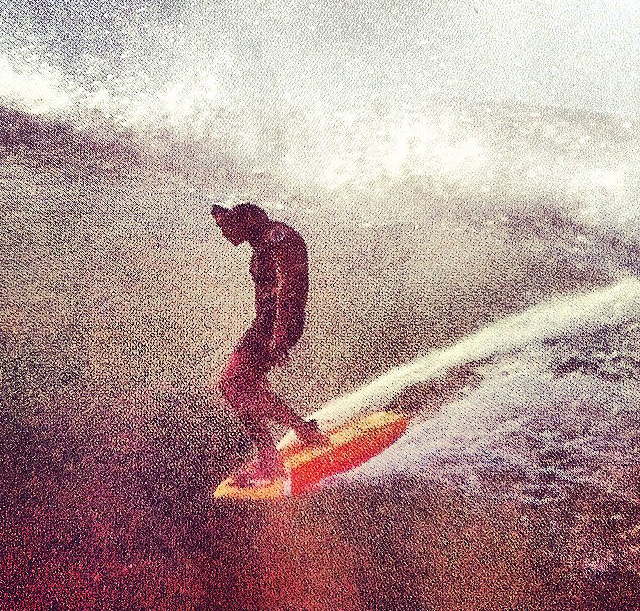[As Wavelength celebrates its 40th birthday in 2021, we revisit at some of the more colourful chapters in European surfing history.]
By the end of the ’70s, the map of the surf world was still being drawn, with well-established scenes mainly centred around Australia, the US and Hawaii. While European breaks had been surfed for a few decades by locals and travelling surfers alike, they were mainly in summer resort hubs, like Newquay, Jersey or Biarritz. Many of the Atlantic’s more challenging waves were rarely or never tackled, with a lack of surf forecasting adding a further challenge to discovering some of the Continent’s best and most fickle waves.
A little-known French town called Hossegor had made fleeting cameo appearances in American mags and films since the 60’s, but was still an obscure, sleepy backwater considered too exposed and out of control for much of the year.
That all changed when the 1980 World Amateur Championships, forerunner to the ISA Games, were held in France. Australia’s national team included the likes of a certain Maurice Cole and the trip proved pivotal in both Maurice’s and Europe’s surfing stories.
“It was a Saturday and the Juniors were on, so I had the day off. I got picked up and we went to check the waves at Hossegor for a freesurf. We walked over at La Graviere and it was 6-8ft A-frames. Perfect, draining, spitting barrels. I was just speechless…”
Maurice’s local mates explained that people didn’t surf there as the wave was too fast, preferring the smaller breaks south in front of La Centrale or Capbreton when swells were solid.

“I found out later that it had been surfed before, in summer mainly. I know (Jeff) Hakman had surfed it back in the early 70’s on a longboard when it was small,” says Maurice, “But nobody had really taken it on, in what you’d call real La Graviere conditions today.”
The Landes coast is relatively unremarkable compared with most of Europe’s dramatic Atlantic shoreline, a low lying stretch of sand dunes that appears uniform and more or less featureless for a couple of hundred km’s, but it’s what happens just offshore that makes Hossegor unique. A deep submarine trench, known as the Gouf de Capbreton starts just off the beach, allowing raw open ocean swell to unload direct onto the shorebreak.
Maurice’s green n’ gold tracksuited Aussie teammate Wayne ‘Rabbit’ Bartholomew was staying in the same room, and was just back from the festivities at a local nightclub as Maurice arrived in a board-grabbing frenzy. Rab lifted a weary, inebriated head from pillow enquire, “How’s the surf?”
“It’s the best fucking surf I’ve seen in my life.”
“I ran down the beach looking at these giant teepees, barrelling so hard. It was like running in slow motion, Chariots of Fire style.” Cole admits he initially struggled as he tried to catch the bigger sets and got repeatedly flogged, unaccustomed to the power of the wave. After continual drubbings, he changed tactics and started taking smaller waves in the 4ft range, before working up to the 6ft-ers, then the bigger bombs.
“I surfed 7 ½ hours straight that day. I didn’t realise at the time, but crowds of people came to watch on the beach. Rabbit came down and joined me, we had our minds completely blown. I was just like, ‘Shit. France’s has got some of the best waves in the world.'”
Cover Photo: John Conway / Wavelength Archive

